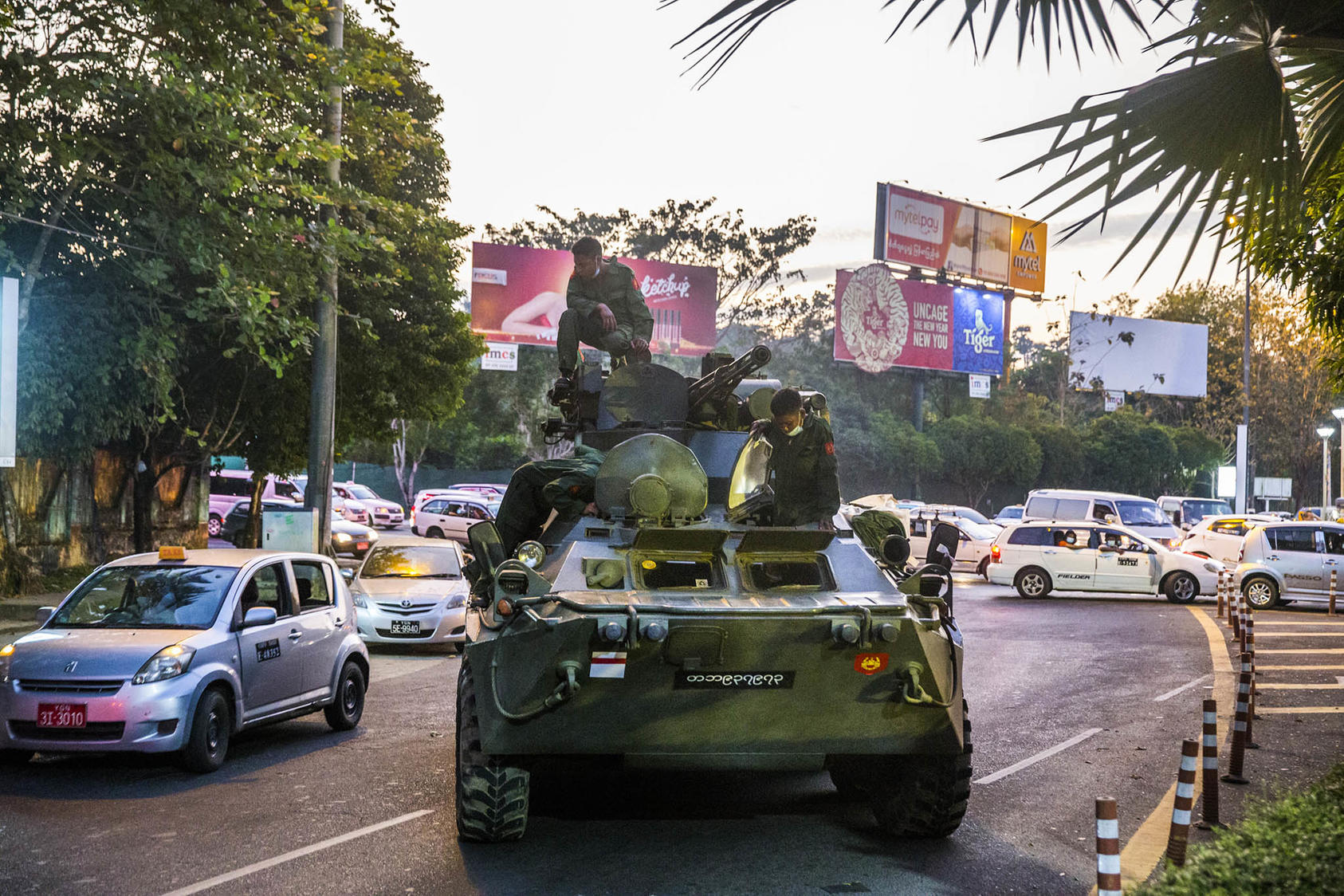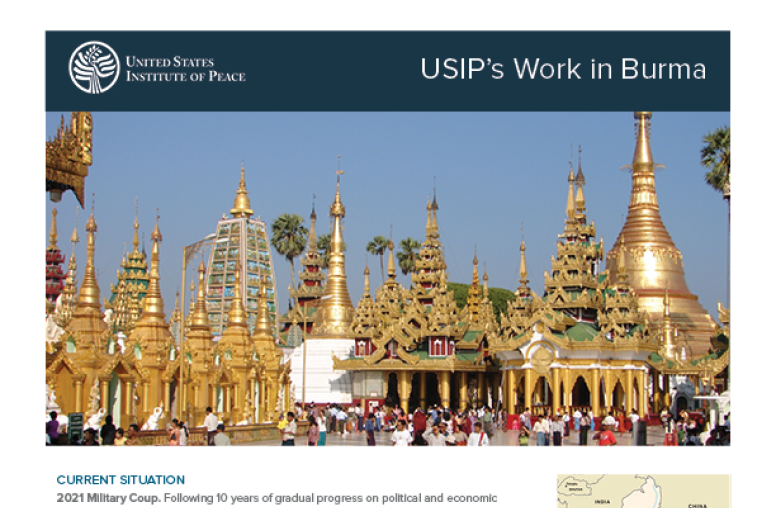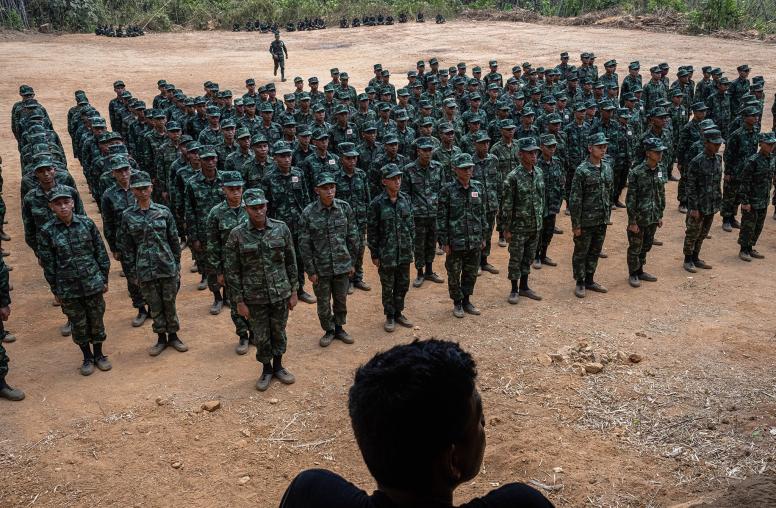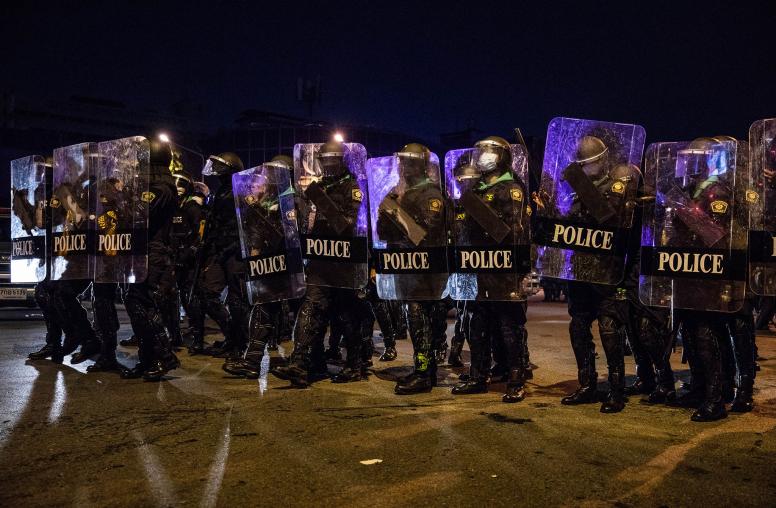Myanmar’s Fateful Conscription Law
The junta’s shift to compulsory conscription reveals its desperation and solidifies its image as a source of instability.
Earlier this month, Myanmar’s ruling junta enacted a compulsory conscription law that had been dormant since 2010. General Guan Maw, a leader of the Kachin Independence Organization, greeted the junta's decision by comparing it to the 2021 military coup: "If February 1, 2021, was the beginning of the end, the law enforced on February 10, 2024, can be said to mark the end of the end.” As popular reactions to the new conscription plan roll out across the country, General Guan Maw’s pronouncement becomes increasingly prescient.

Three years after its ill-advised coup against the elected government, the military junta seems to have scored yet another “own goal,” further aiding its own decline. Enactment of the conscription law can only be seen as a stark illustration of the junta’s desperation amid the considerable depletion of its military manpower due to coordinated attacks from a plethora of armed groups.
And as the surging anti-coup resistance movement forces the military into an ever-narrower space in the middle of the country, the junta’s introduction of universal conscription has triggered panic among the general public. Perceiving military service as a likely death sentence, hordes of people are attempting to flee to areas liberated by the resistance, migrate across borders to foreign countries, or join resistance forces battling the junta regime.
The enforcement of this law is the latest action by the junta to spur regional instability and burden neighboring countries, potentially exacerbating transnational criminal activity and causing new refugee influxes. It is sure to solidify the junta's image as an agent of chaos and instability in Myanmar and across the region.
Myanmar’s History of Deferred Conscription
The idea of compulsory conscription — first initiated in the mid-1950s by the country’s then-military leaders — was premised on concern of an invasion by India and China. Ironically, one of its architects, Maung Maung, also argued in his book, “The Caretaker Government of 1958-1960,” that "the fundamental principle behind the National Service Act was not only for national defense but was also aimed at preventing a military coup by a disloyal head of the armed forces." The idea was that regular turnover would limit military loyalties that could be instrumentalized against the civilian government.
The National Service Bill drafted in 1955 was only taken to parliament for enactment under the caretaker government of 1958 to 1960, and it’s unclear whether it was ever formally entered into force. Despite longstanding interest in compulsory conscription, it seems that before 1988 the military replenished its forces “almost entirely with volunteers” while only using the bill's provision to enlist technical specialists, such as doctors and engineers.
But in response to the country’s 1988 rebellion and the public's growing aversion to the military, Myanmar’s generals began to rapidly expand the armed forces — and were therefore motivated to initiate forced recruitment and deceptive tactics to trick young men, including minors, into enlisting. A 1988 report from the International Labor Organization noted that, “There was regular forced recruitment throughout Myanmar, including minors, into the Tatmadaw and various militia groups [the Myanmar military is also known as the Tatmadaw or Sit Tat]. It appeared that this did not occur pursuant to any compulsory military service laws but was essentially arbitrary.”
Despite facing serious manpower shortages in the years since, the military chose not to initiate mandatory conscription, likely for fear of having “a large number of men and women in the ranks who could disrupt important military operations” and “who could even turn their training and weapons against the regime itself.”
Only on November 4, 2010, on the eve of elections, did the outgoing military regime enact a conscription law, sparking panic and criticism among the public and opposition, with the quasi-civilian governments that held office between 2011 and 2021 opting to shelve the law. It wasn’t until February 10, 2024, three years after the tumultuous coup, that Myanmar’s military regime decided to enforce the conscription law.
Why Now?
The regime's mandatory conscription requirement underscores the glaring reality of a severe and growing shortage of military personnel. Despite widely varied estimations of the Myanmar military's size, ranging from 300,000 to 400,000, an analysis I conducted in early 2023 revealed that the junta military forces had shrunk to approximately 150,000 by early 2021. By late 2023, after the launch of the resistance forces’ Operation 1027, that number was down to no more than 130,000.
Previously, falsified reports with inflated personnel data were flowing up the chain of command, engendering a sense of complacency among junta leadership about its fighting strength. A defecting officer once commented, “The false reporting is so widespread that even Commander in Chief Min Aung Hlaing and his deputy, Soe Win, do not know the actual number of Sit-Tat troops.” The leadership also assumed that its airstrikes and heavy weaponry could compensate for any shortage of ground troops.
But with insufficient ground forces, the military has been forced to relinquish control over vast swathes of territory — including urban areas and strategically significant military bases — in what amounts to the greatest losses in its history.
However, the success of the resistance’s Operation 1027 seems to have sparked some urgency for enacting the 2010 conscription law, as the military’s ongoing and humiliating defeats since Operation 1027 have forced the regime to realize that ground forces are essential and that other means of replenishing manpower — such as recruiting retired veterans, military-affiliated family members and even prisoners — have fallen short.
The regime has stated it intends to draft 60,000 men annually and boost the morale of its active personnel, who have been demoralized by repeated and on-going battlefield losses and combat fatigue. As one defector confided, "Shrinking manpower has had a significant psychological impact on the soldiers, including commanders, who no longer feel a sense of security, even inside their own base."
USIP’s data shows that 12 brigadier generals have been killed or captured by the resistance. With mass demoralization, surrender, desertion and the loss of senior officers threatening military institutions, the generals apparently hope that the prospect of new recruits in large numbers will prevent the morale and physical collapse of the military — at least for now.
But the generals are still faced with the key question of how to conscript young people who harbor deep resentment toward the military — which is almost all of them. Furthermore, the need for manpower is urgent, as fighting is expected to escalate in March and April. This has reportedly already led the military to bypass the lengthy recruitment procedures and rely on its notorious methods of forced and arbitrary recruitment: pulling people off the streets, from their homes and out of IDP camps. Furthermore, the regime lacks the time to train new recruits and will be forced to deploy inexperienced and untrained officers and soldiers to the front lines. The regime views conscription as a numbers game rather than an investment in a professional force.
Recognizing that conscripts could end up as porters, human shields or dead, even pro-military supporters and military-affiliated families have been reluctant to enlist. As one young person from a Naypyitaw military family told me, “Even my father remains in service because he could not leave and desert. The whole family urged me to leave the country as soon as possible, because we all know that my future will be doomed if I join the military.”
The End of the End?
Since the days of Ne Win, the military has been an ultranationalist Bamar force, dedicated to keeping tight control over minorities and political opposition. Young people in Myanmar, once the recruitment base for the military, have rejected this objective. The military has already lost the generation they are now trying to recruit, and forced conscription will only deepen young people’s support for a united resistance.
Those who are forced into the military are likely to become internal subversives, defectors and untrustworthy subordinates. The general’s program will only hasten the military’s demise, worsen the public’s suffering and exacerbate the regional crisis.
The conscription law has already intensified chaos domestically, with thousands flocking to foreign embassies and passport offices or across the border. The desperation caused by the junta’s conscription law has only strengthened the ability of human traffickers and transnational criminal organizations to prey upon vulnerable people and families. This is just the latest example of how the Myanmar military is the primary agent of instability in Myanmar and its neighbors. It is already sparking refugees flows that are overwhelming the region. Because of the Myanmar military’s post-coup violence, and its atrocities against Rohingya and other ethnic minorities before the coup, 2.6 million people are internally displaced, and more than 1.35 million people are refugees across the region.
This conscription law sends a strong signal that the generals recognize the impossibility of sustaining the status quo. It is an act of desperation to achieve short-term survival while they scramble to suppress the public and lobby their international allies to prop them up. This may be the “end of the end” that General Guan Maw, a seasoned military leader himself, has envisioned.
Ye Myo Hein is a visiting scholar at the U.S. Institute of Peace and a global fellow at the Wilson Center.



